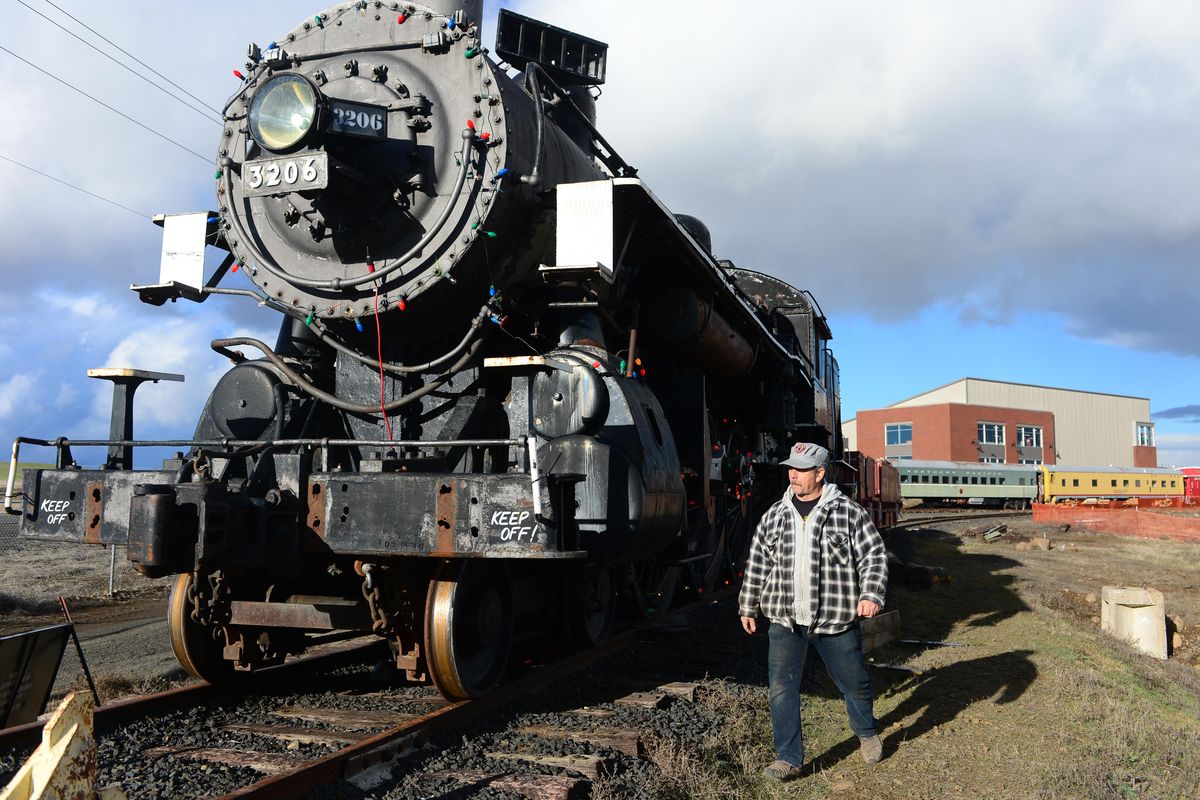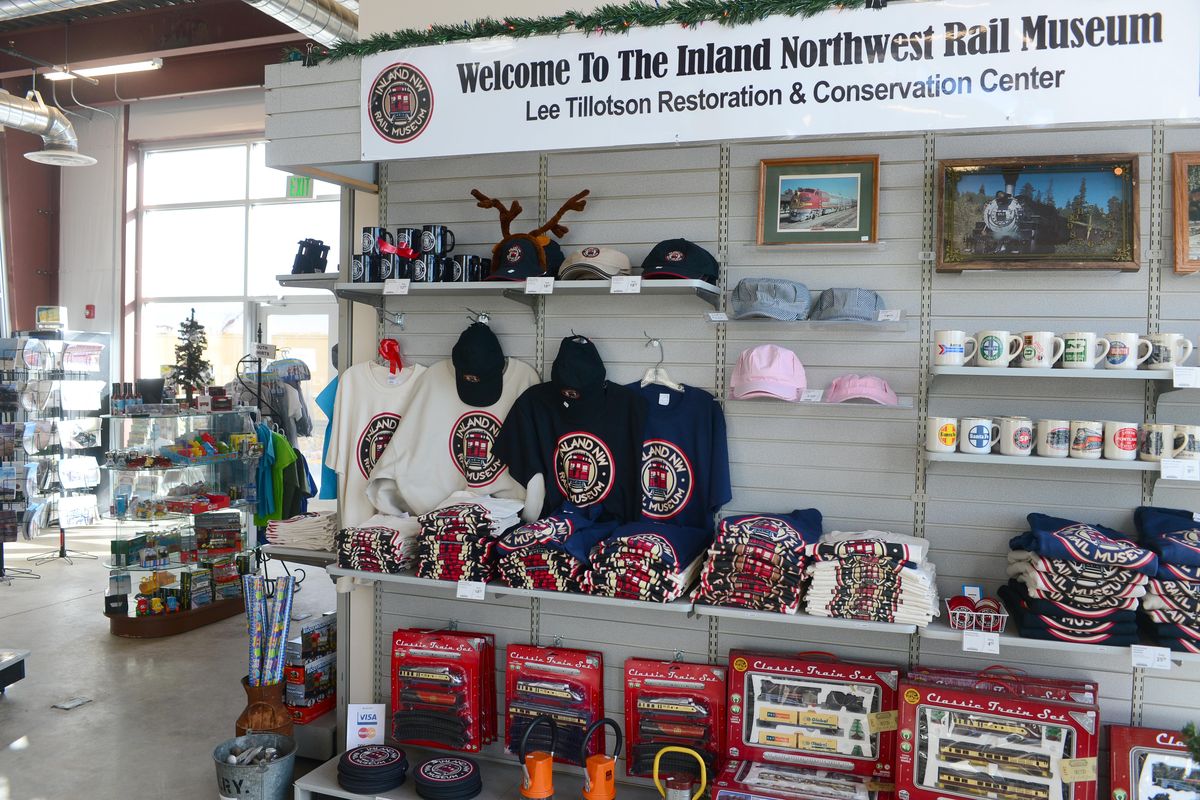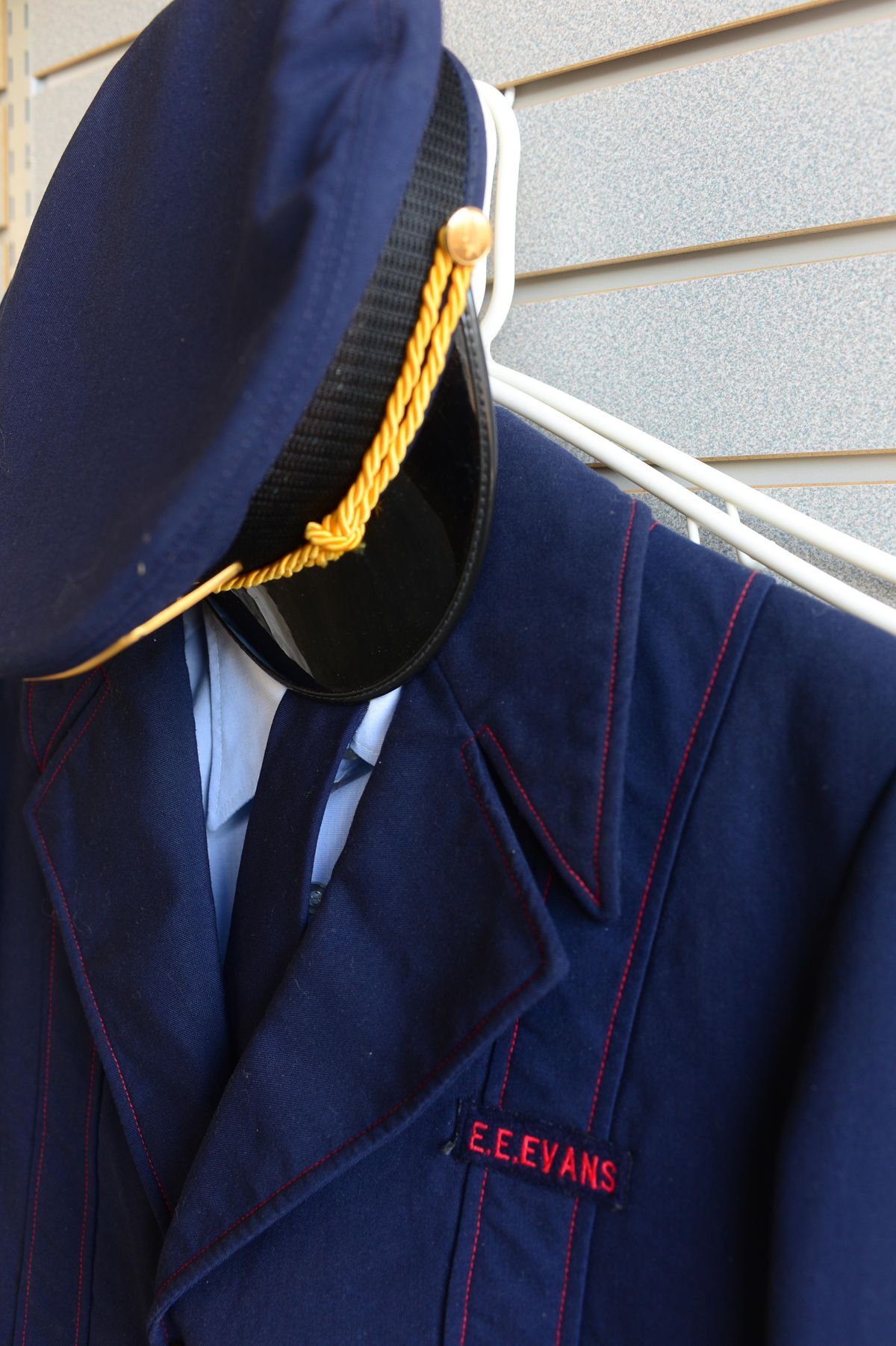Inland Northwest Rail Museum opens new digs near Reardan
In the gift shop at the Inland Northwest Rail Museum near Reardan, Wash., visitors can buy souvenirs, clothing, model trains and books. The recently opened museum has built a building and moved several rail cars to the site. (Jesse Tinsley / The Spokesman-Review)
Fourteen years after being told to vacate the Spokane County Fair and Expo Center, an Inland Northwest railway preservation group has opened a new museum a couple of miles west of Reardan, Wash., along U.S. Highway 2.
The Inland Northwest Rail Museum was designed and built to replicate a historic rail yard, with a facility that showcases the various functions of a working railroad, including a loading platform, shop, switchyard and roundhouse.
More than 1,500 people showed up for a grand opening of the $2 million project in August, museum President Dale Swant said.
“We decided we wanted to do this right,” said Swant, who views the museum as a great tourist attraction.
“It’s kind of a work in progress,” he said.
Even with all that has been done, plans call for more.
A roundhouse, covered loading platform and larger museum space are envisioned.
The roundhouse will be built around the Union Pacific’s historic turntable, relocated from what is now the site of Wal-Mart on East Sprague Avenue in Spokane Valley.
One of the big goals is to open an excursion train ride from Reardan to Cheney in the next few years, Swant said.
The new museum is the work of the Inland Empire Railway Historical Society, whose roots date to the late 1960s.
For nearly 40 years, the group operated a popular attraction at the Spokane Interstate Fair, including displays inside the rolling stock and a train ride on a 2-foot-gauge line.
The volunteer organization is known for preserving and painting the retired Union Pacific Railroad steam locomotive No. 3206 that had been in High Bridge Park before being moved to the fairgrounds in 1978.
Today, that locomotive sits at the front of the line at the new museum along Sprinkle Road at U.S. 2, joining nearly two dozen pieces of rail stock on-site. Two pieces are currently open for display.
One of them is a 1914 Union Pacific dining car built by the Pullman Co. and converted to a work crew diner in 1940.
It is currently in the shop in what is being called the Lee Tillotson Conservation and Restoration Center, a 12,000-square-foot building that is doubling as the museum space, for now.
Tillotson, a founding member of the historical society, died in 2010 and left a substantial bequest.
The Tillotson center has a shop pit so volunteer crews can work beneath the cars to restore them.
In one of the museum’s brochures, Swant wrote, “The principal mission of the museum is the conservation of the historic collection.”
A substantial part of the museum collection is on display, including railroad relics, signs, photos, dining car china and original maps. Most of the acquisitions came from donors.
A gift shop and spaces for group events are included in the facility.
Today’s museum arose from a decision by Spokane County commissioners in 2002 to evict the society from the fairgrounds, saying they believed they could generate more revenue from the property the society occupied.
“It was a big mistake,” Swant said of the decision back then.
Spokane was and still is at the heart of the region’s converging rail lines, he said.
The county’s rush to get the rail display moved was later rescinded, and the society continued to operate on year-to-year leases.
“Of course, you don’t pick up this stuff and move it,” Swant said.
Getting a large steam locomotive and heavy rail cars from Havana Street to Reardan required a lot of planning and work.
First, the museum had to find a new location.
Museum officials chose the current 30-acre site because it was next to the state-owned Palouse River & Coulee City Railroad, which is operated by the Eastern Washington Gateway Railroad.
Then, workers had to lay track and build a crossing at Sunset Highway next to the property and prepare the site with a well, electrical power and other work.
In August, the rail stock was assembled as a “hospital train” and approved to be moved west. Three rail companies did the work.
The equipment arrived just in time for the grand opening, Swant said.
MMEC Architecture & Interiors, of Spokane, designed the museum, and Bouten Construction, of Spokane, was the contractor.
Swant said museum members had at one time dreamed of a facility that was estimated to cost $20 million. That was clearly not going to work.
“Our plans changed a lot along the way,” he said. “There were times when there were doubts.”










